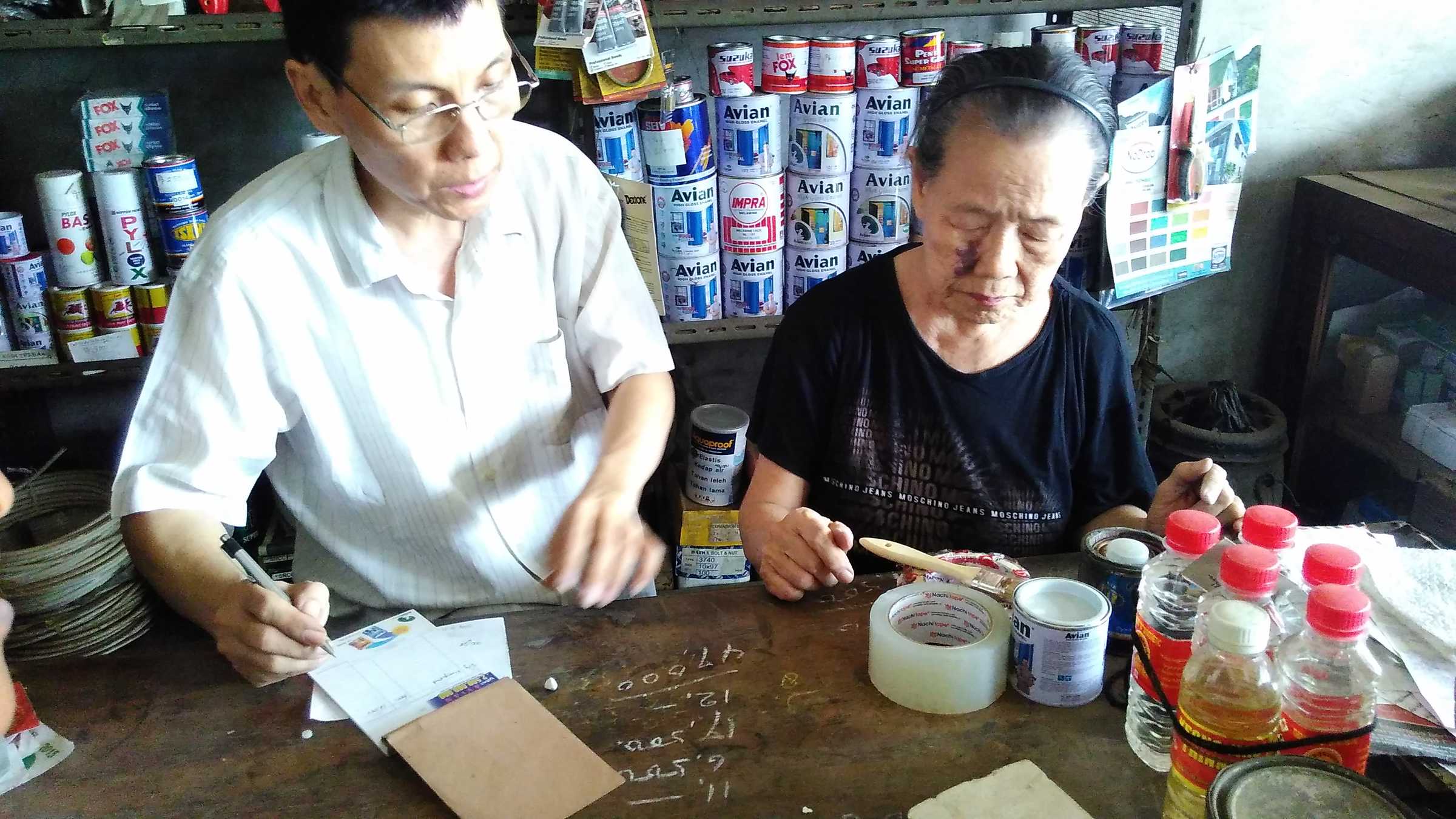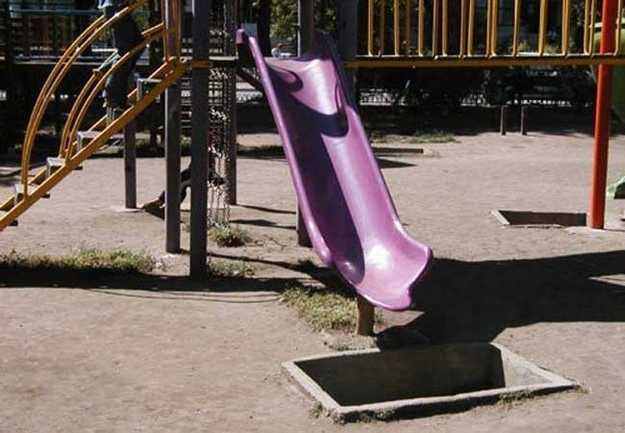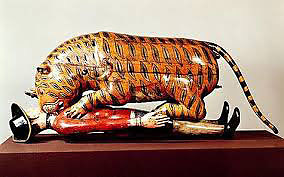Roaming Academy ~ Non-transmittable Form? (from month to month)
photo by Isabelle Sully
Seminar 6: April 29 and 30, 2016
with Mi You and Ruth Noack
This DAI week's seminar will be the last one of us all sitting together in a seminar room, listening to each other speak. After this, we will have an exhibition to build up and the format of exchange will be another. So it is time to pull together some threads: What is non-transmittable form and how to we engage with it in a politically and aesthetically productive way? - and prepare for things to come: what are the next steps that need to be taken in bringing exhibition and publication about?
Students have asked for last-minute lectures, also in an attempt to go through as much as possible into the year before time runs out. I will oblige them with one or two lectures, one of them about Non-transmittability of form, the other to be determined. Possibly looking back on Agamben’s essay Notes on Gesture in: Means without End.
We will also have a guest lecturer, Mi You, an artist, scholar and curator from Beijing/Cologne, who will enlighten us with research on the history of transglobal migration of forms.
Reading:
An essay by our colleague Benjamin Noys: http://www.film-philosophy.com/vol8-2004/n22noys
Seminar 5: March 18 and 19, 2016
with Tina Gverović and Ruth Noack
In the face to face meetings, students will discuss the progress of their work for the final exhibition.
On Saturday, we will finish quickly with the "show and tell" session. (The three people who have not done so, present three artworks that have been inspiring to her-him-it-them.)
Towards the 2nd half of the day, Anja Scheffer, a theater director will join us. Together with her, we will spend a bit of time on preparing the symposium on Sunday.
The day will focus on working towards the final exhibition. Question of space, timing, organisation, budget, need to be discussed. If there is time, we will also look at and discuss the individual transmissions. This session will be student driven, so students may propose other subjects that need to be discussed.
Seminar 4: February 12 and 13, 2016
with May Adadol Ingawanij and Ruth Noack
In the face to face meetings, students will each answer the following questions, in preparation for next day’s seminar: What is a form? For what reason(s) could a form be non-transmittable? What output for the course are you aiming at? What methods can you use to get there? What can be done to prevent getting overwhelmed with the work load as the year progresses?
On Saturday, we will start out with a "show and tell" session. Each person will present three artworks that have been inspiring to her-him-it-them. (As you will have noted from various agendas, I am trying out different forms of gendering. Let me know what you like best. Personally, I (Ruth) find it hard work to dis-adhere from binary conventionalities in personal pronouns.) Students are asked to refrain from using the digital screen as the fail safe form of representing the art works. However, digital screens are not prohibited and there are occasions, where this kind of presentation might make best sense. Other than that, be creative. Students will explain in which way and why a work has inspired them.
The day will focus on a discussion of Dai Xiyun's new and amended exhibition proposal. To recapitulate: Last session, it was decided that we'll work towards an exhibition with the goal of getting it off the ground within the frame of the course (no extended time etc.), that Dai Xiyun would be its curator and that one of the goals would be to be honest to the process and take care to remain in communication and negotiation with each other.
Students will present proposals for their individual contribution to the exhibition, presumably an art work, but possibly something else.
Finally, we will formulate what we think needs to be done to make an exhibition that satisfies us, in practical and intellectual terms. We will decide who takes on which part of the work.
Seminar 3: January 8 and 9, 2016
with Tina Gverović and Ruth Noack
The first meeting in 2016 will start off with a re-presentation of our Jakarta research presentation. This will give David and Florencia an opportunity to join in and allow Tina, who joins us as a tutor for the first time, to picture what has happened in our research so far.
Tina will give an introduction to her practice as an artist. Afterwards, she will talk to us about a 1996 exhibition held at Centre Pompidou, called L'informe: Mode d'emploi, which was based on George Bataille's 1929 principle of formlessness and which argued, that that this principle had been relevant throughout modernism of the 2nd hald of the 20th century. (They primarily looked at Western art.)
We will discuss Daisy's exhibition proposal, based on the idea of non-transmittable form and the research that has been done so far by the group, which she has compliled with the assistance of Sebastian and Hu Wei.
The group has decided against introducing new texts. We might want to continue discussing old texts.
Our session will focus on two main issues:
How do students define form and is there any common ground in these definitions? (Please revisit your definitions in preparation!)
How are we to proceed from this point and what result do we wish to reach with this year's research?
Note on the Friday's tutorials: Tina and I will talk with students in one-on-one sessions. Tutorials should include student's individual take on the questions: For what reason(s) could something (a form) be non-transmittable? What output for the course are you aiming at and what methods can you use to get there? What can be done to prevent
October 16/17
with May Adadol Ingawanij and Ruth Noack
In this first meeting of the group, we will start to approach questions of (non)transmission from a diverse range of perspective. Ruth will give an overview of how the problem was dealt with at documenta 12 and why it seems pertinent today to re-open the discussion. May will show Tropical Malady by Apichatpong Weerasethakul. Students will have read at least the first two chapters of Eka Kurniawan's Man Tiger. A Novel. (Required reading!) We will grapple with the tiger, careful to avoid being devoured by the trap of magical realism. Those who know Téa Obreht's The Tiger's Wife, might contribute their insights.
We will also start discussing the trajectory of the year's research, but things will only be set in stone after our experience in Jakarta. The trip to Jakarta will obviously also be featured in depth.
All students not bound up in other DAI tutorials will attend all our tutorials on October 17th. This is so that we can all quickly get on the same page in respect to each other's practices and interests. Each student is asked to prepare for her_his tutorial a plan on how she_he would set the trajectory and output of the class in relation to her_his own practice at this moment in time.
http://www.vam.ac.uk/content/articles/t/tippoos-tiger/
Please read one of the two for our October 16 & 17 meeting:
Kurniawan, Eka. Beauty Is a Wound. Text Publishing Company, 2015. Excerpt here: http://www.wordswithoutborders.org/dispatches/article/beauty-is-a-wound
———. Man Tiger: A Novel. Verso Books, 2015.
Background info, read if interested:
Arkipel, Grand Illusion, catalogue of the 3rd Arkipel Jakarta International Documentary & Experimental Film Festival, Aug 2015: http://arkipel.org/catalogues/
Hujatnikajennong, Agung, ‘Indonesia Contemporary Art in the International Arena: Representation and Its Changes,’ in Binter, Julia T. S. Global Studies: Mapping Contemporary Art and Culture. Distributed Art Pub Incorporated, 2011.
Juliastuti, Nuraini, ‘Ruangrupa: a conversation on horizontal organisation,’ Afterall, summer 2012.
Lee, Christopher J., ed, Making a World After Empire: The Bandung Moment and Its Political Afterlives. Athens, OH: Ohio University Press, 2010.
Schott, Christina, ’25 years of Cemeti Arthouse: interview with Nindityo Adipurnomo and Mella Jaarsma,’ http://universes-in-universe.org/eng/nafas/articles/2013/cemeti_art_house
Teh, David, ‘Who cares a lot? Ruangrupa as curatorship,’ Afterall, summer 2012.
Toer, Pramoedya Ananta. Buru Quartet i.e
———. Child of All Nations. Penguin Books, 1996.
———. Footsteps. Penguin, 1996.
———. House of Glass. Penguin, 1997.
———. This Earth of Mankind. Penguin, 1996.
Also short stories
———. Tales from Djakarta: Caricatures of Circumstances and Their Human Beings. Equinox Publishing, 2000.



